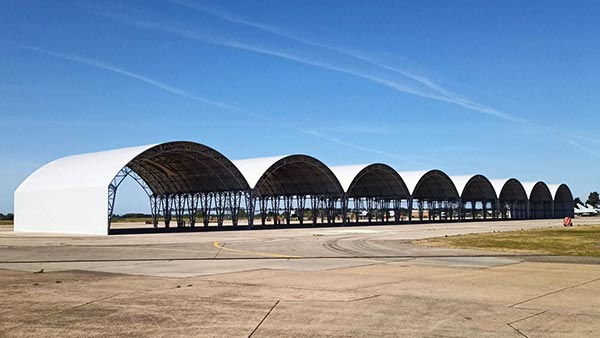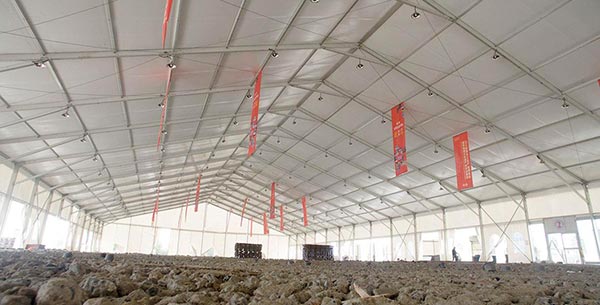Fabric structure buildings: materials, characteristics and diversity
In contemporary architectural design, a new type of structural form has gradually emerged, that is, fabric structure buildings. This architectural form has added new vitality to the modern urban landscape with its unique materials, light body and dynamic shape.

Materials of fabric structure buildings
The core material of fabric structure buildings is high-performance soft fabric. This fabric material usually has excellent physical properties, such as high strength, weather resistance, self-cleaning and certain light transmittance. Common fabric materials include polyester, glass fiber, etc., which are treated with special coatings such as PVC, polyvinylidene fluoride (PVDF) or polytetrafluoroethylene (PTFE) to improve their durability and functionality.
Base fabric woven from polyester filaments is one of the commonly used materials in fabric structure buildings. This base fabric has high strength and good weather resistance. After PVC coating treatment, the surface is coated with polyvinylidene fluoride (PVDF) and the like to form a coated cloth with self-cleaning and light transmittance. This coated cloth not only has good physical properties, but also is light in weight and easy to process, and is suitable for large-span building structures.
Glass fiber fabric is also a commonly used material in fabric structure buildings. Glass fiber has high strength and good weather resistance. After the surface is coated with polytetrafluoroethylene (PTFE), it forms a permanent building material with self-cleaning and light transmittance. Due to the light weight and high strength of glass fiber fabric, it is more and more widely used in the field of construction.

Characteristics of fabric structure buildings
The characteristics of fabric structure buildings are mainly reflected in the following aspects:
- Lightness: The fabric material itself has the characteristics of lightness, which makes the fabric structure building visually light and elegant. This lightness not only brings a unique aesthetic effect to the building, but also reduces the requirements of the building on the foundation and saves construction costs.
- Flexibility: The fabric material has good flexibility and deformability, which enables the fabric structure building to adapt to various complex spatial forms and terrain conditions. At the same time, the reusability of the fabric material also improves the sustainability of the building.
- Light transmittance: The fabric material has a certain light transmittance, which enables the fabric structure building to make full use of natural light during the day and reduce lighting energy consumption. At the same time, by adjusting the color and density of the fabric, different light and shadow effects can also be achieved, adding a unique artistic charm to the building.
- Environmental protection: Fabric materials have little impact on the environment during production and use, which is in line with the development trend of green buildings. In addition, the lightness and flexibility of fabric structure buildings also reduce the difficulty of building demolition and reconstruction, and reduce the generation of construction waste.

Diversity of fabric structure buildings
The diversity of fabric structure buildings is mainly reflected in their form, function and use. From the perspective of form, fabric structure buildings can present a light and flowing visual effect; from the perspective of function, fabric structure buildings can be used for sunshade, sound insulation, heat preservation and other purposes; from the perspective of use, fabric structure buildings are widely used in stadiums, exhibition halls, waiting rooms, warehouses and other places. This diversity makes fabric structure buildings have a wide range of application prospects in modern urban construction.